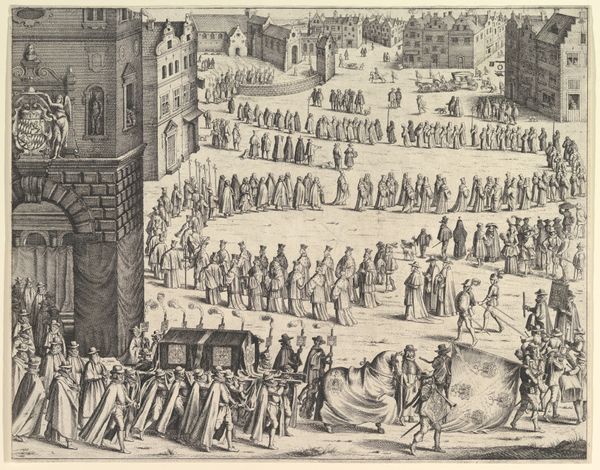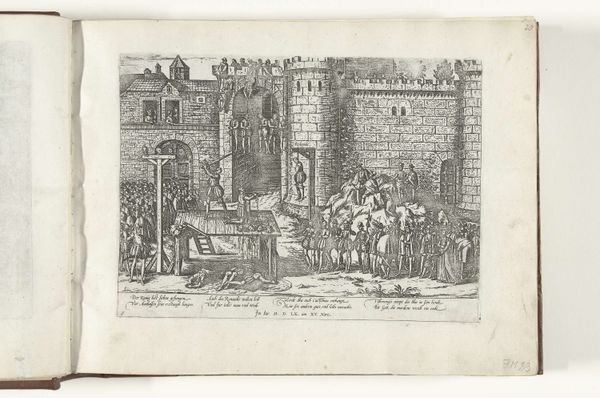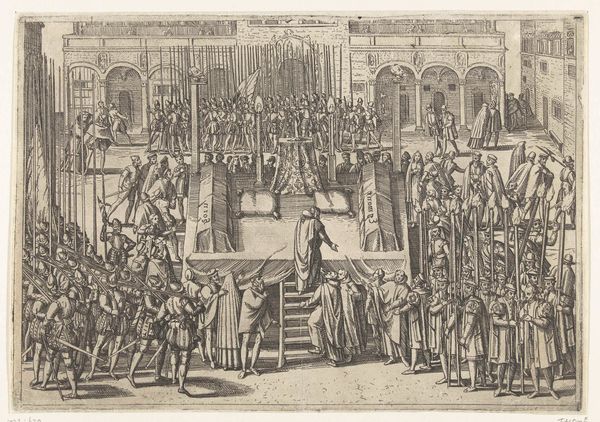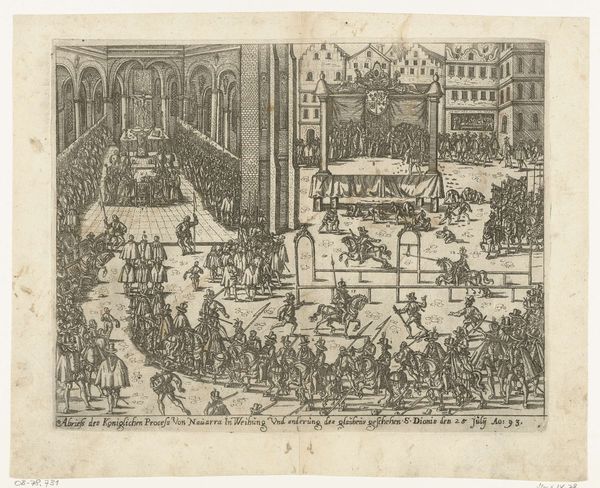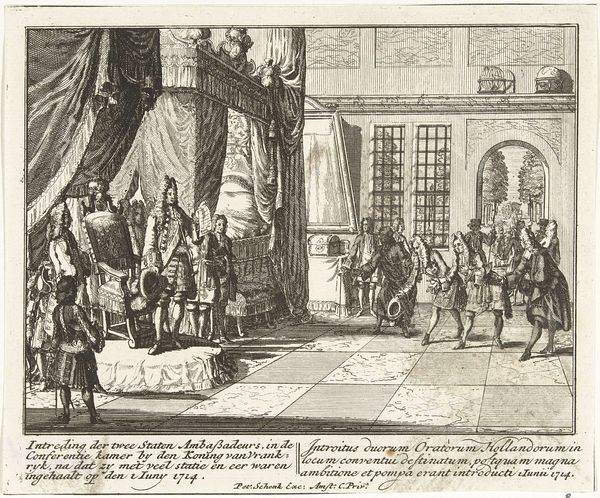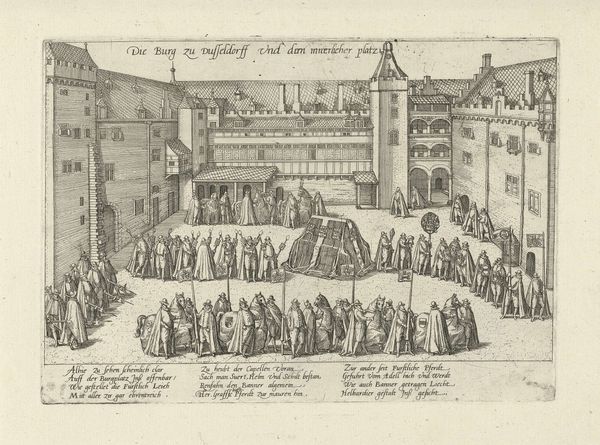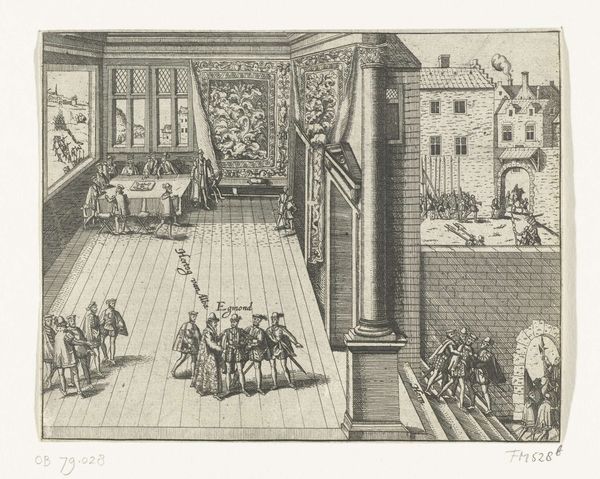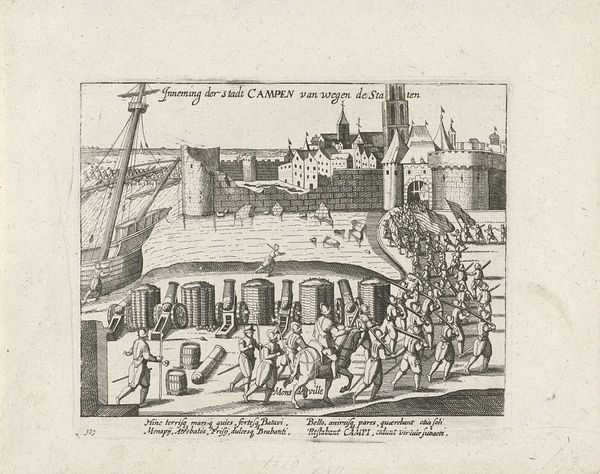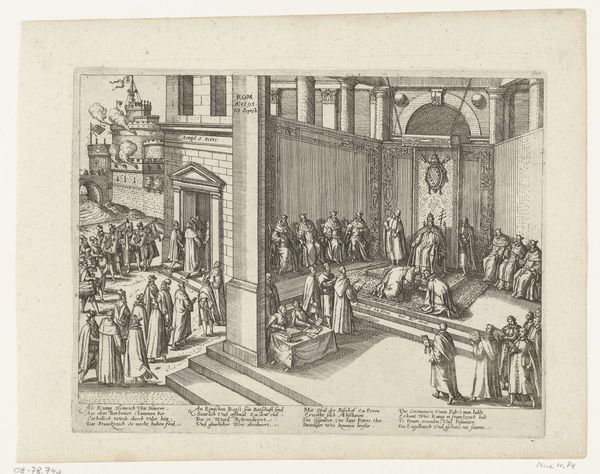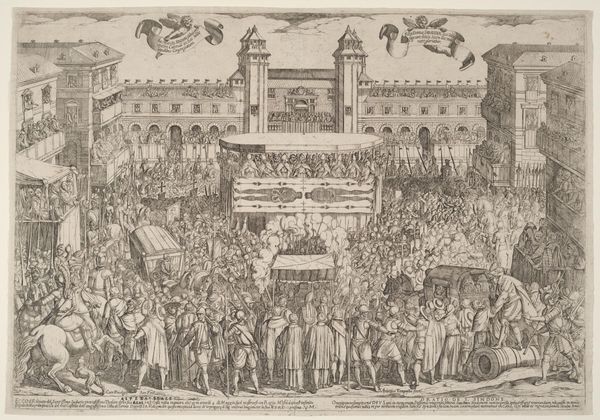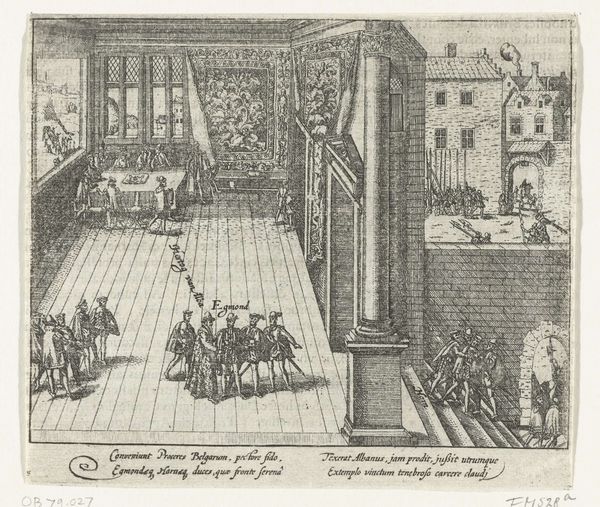
print, engraving
#
medieval
#
narrative-art
# print
#
genre-painting
#
history-painting
#
engraving
Dimensions: height 377 mm, width 505 mm
Copyright: Rijks Museum: Open Domain
Curator: Here we have a remarkable engraving by Jean Perrissin from around 1570, titled “Zeven edelen voor de poort van het Château d'Amboise opgehangen, 1560.” That’s “Seven nobles hanged before the gate of the Château d'Amboise, 1560.” It commemorates, let's say *records*, the Amboise conspiracy. Editor: Right, "records" being the operative word here. The first thing that hits me is the cold, graphic precision. It’s a scene of brutal public execution depicted with this almost...administrative detachment. Curator: Yes! You get this powerful feeling from the medium itself, engraving – so precise, and reproducible en masse. Each tiny line, cut with such...certainty. It amplifies the feeling of authority and unflinching...justice, shall we say? Editor: Or, maybe "official terror?" I'm struck by the labor involved here – not just Perrissin's, carefully cutting this scene into the metal plate. But think of all the people involved, building that gruesome execution platform and just...the sheer logistics of a spectacle like this. That wood was cut, shaped, the ropes were woven, the garments…all those materials touched by hands we'll never know. Curator: It’s a grim theatre, isn’t it? The Château looming in the background…those stoic figures watching from the ramparts, from windows of the house in the background… They create this unsettling contrast, like a play with multiple stages and spectators. Almost voyeuristic in some ways. The horror becomes normal in that composition. Editor: Exactly. Think about the consumption of this image, too. Prints like these weren’t luxury items. They were part of a developing public sphere. These images reinforced specific narratives, especially religious and political ones at a time of intense ideological division in France. Curator: Perrissin obviously wasn’t just a recorder here, although I do get the appeal of seeing the whole operation this way – instead, Perrissin becomes a commentator! Think about the way those executed nobles are positioned relative to the nobility in the castle – each an effigy reflecting, questioning the viewer and the reasons for the cruel violence happening now. The execution stage as political propaganda for whomever could see and contemplate the scene. Editor: That political stage was consciously designed from beginning to end for mass-dissemination, too – and I find the power dynamics between image and material utterly unnerving, honestly. Curator: Absolutely, it leaves you pondering the material reality behind such power and representation... Editor: The machinery, in every sense, of power on full, gruesome display.
Comments
No comments
Be the first to comment and join the conversation on the ultimate creative platform.
